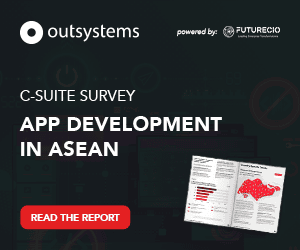A vast wave has swept the world in the past few years, and those who cannot ride it are in danger of being swept away by a tsunami. Artificial intelligence (AI) has become more than a buzz; it is a necessary priority for businesses to thrive. Forbes predicts the AI market will reach $1,339 billion by 2030, substantially growing from 2024’s projected $214 billion revenue.
Sudeep Kesh, chief innovation officer at S&P Global Ratings, said: “AI will increasingly impact labor in areas like improved efficiency, productivity, creation of new roles, human-AI collaboration, autonomous systems, and labor redistribution and reskilling.”
However, is the workforce ready to ride the tide and the bigger waves coming as businesses become more intentional about implementing technology?
AI skills gap

Mark Tan, vice president and country general manager of Tech Data Singapore & Tec D Malaysia, shared that Singapore’s National AI strategy aims to triple its AI workforce within 3-5 years. However, 39% of businesses in the country reported a shortage of AI talent. Additionally, Tan shared that most (84%) knowledge workers in Malaysia use AI at work, but only 22% receive role-specific AI training.
According to Tan, AI/ML applications rely on accurate data, analytics, secure storage, and robust security. However, many businesses face skill gaps in these areas. He cited a 2023 APJ Direction of Technology Report showing that 66% of partners seek cybersecurity and networking expertise, which are foundational to building AI solutions.
“To address these gaps, organisations are upskilling teams and strengthening data and security capabilities. They also turn to the channel ecosystem for support, leveraging tailored enablement and training programs across the sales cycle,” he shared.
AI training initiatives
To measure the effectiveness of their AI training initiatives on employee performance and business outcomes, Tan said organisations are fostering AI curiosity among employees by encouraging the use of tools like Microsoft Copilot to drive efficiencies.
“Teams are experimenting with practical applications, such as transcribing meetings to extract summaries and action items, generating content, or leveraging AI for HR tasks like creating job descriptions,” he shared.
Tan shared that their company uses AI tools across multiple functions to streamline workflows and improve productivity, demonstrating the value of integrating AI into everyday operations.
Upskilling employees
Upskilling requires some sacrifice and investment. Tan said that organisations that choose to upskill need to balance technology, culture, and strategic partnerships investments: “Organisations should allocate budgets to AI-driven learning platforms, micro-learning modules, and gamified experiences to enhance accessibility and engagement."
“To ensure a good return on investment, organisations must align training with strategic goals and track KPIs like productivity and innovation. A culture of continuous learning, supported by mentorship and personalised development paths, ensures employees apply new skills effectively, driving measurable improvements in individual performance and business outcomes,” he added.
Talent acquisition processes
Moreover, Tan points out that organisations can leverage AI to enhance their hiring and talent acquisition processes.
“In Singapore, 54% of organisations leverage AI for HR, while 82% of HR leaders in Malaysia highlight its ability to save time and streamline workflows,” he shared.
The Tech Data executive said AI helps automate tasks such as resume screening, job description drafting, and candidate sourcing.
“It also uses analytics to predict applicant success and identify emerging skills trends, guiding hiring strategies. AI-powered tools can also efficiently identify top candidates, suggest tailored interview questions, and draft customised offer letters, accelerating hiring processes while enhancing onboarding and retention efforts for long-term success,” he said.
Continuous learning and adaptability
Internally, CIOs and CHROs can implement strategies to promote a culture of continuous learning and adaptability within their organisations
“To promote a culture of continuous learning and adaptability, CIOs and CHROs must lead by example,”
Consistent upskilling ensures businesses can adopt AI and adapt to emerging technologies like cloud platforms, machine learning (ML), and the Internet of Things (IoT). Leaders should stay ahead of industry trends and identify critical skills to align with business objectives. Training programs should foster a culture where learning is essential to success, with managers recognising and rewarding learning achievements.
“Additionally, creating flexible, accessible learning opportunities like micro-learning portals and leveraging AI for personalised learning paths can keep training engaging. Providing hands-on experiences through gigs or flex teams and encouraging a growth mindset will empower employees to take ownership of their development,”
Forging partnerships
Tan admitted there is a long way to go, but forging partnerships with companies and educational institutions helped narrow the skills gap.
“Companies like Google and AWS have been scaling AI skilling programs across Asia, widening access to foundational AI knowledge and strengthening talent pipelines. Educational institutions often co-develop curricula with industry leaders, aligning training with real-world applications,” Tan shared, adding that companies must address disparities in accessibility, infrastructure, and industry-specific expertise to narrow it further down.
“Tailored AI training programs can help bridge these gaps further,” Tan added. He said companies could accelerate workforce readiness through customised programs addressing sector-specific challenges and skill requirements.
“Moreover, integrating such programs with upskilling initiatives for mid-career professionals ensures a more inclusive, future-proof AI ecosystem,” he quipped.
Bridging the AI skills gap
With AI moving from experimentation to implementation, companies must help the workforce prepare to leverage the technology's full potential. As Tan shared, organisations must focus on upskilling, talent acquisition, AI training, and forging meaningful partnerships to navigate the next era of the AI wave.




